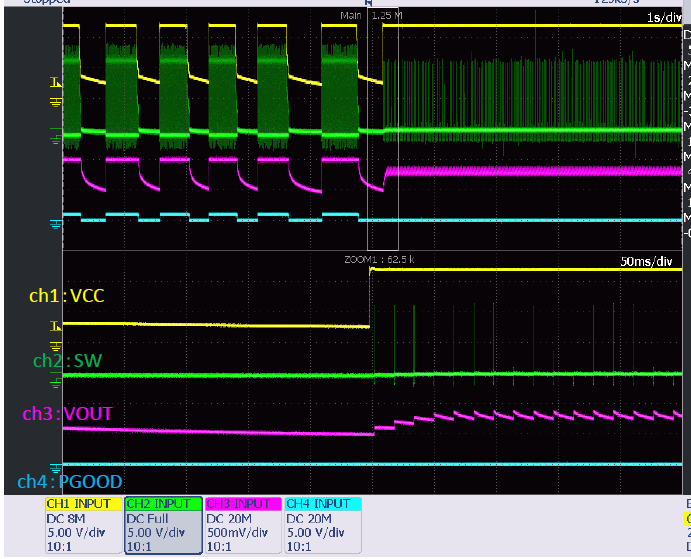Hi,
I am checking the operation of TPS 56121 at low temperature.
I repeatedly turning on and off the input voltage and measured whether the device operates normally.
Attach a waveform. The output voltage does not operate normally when repeating on and off several times.
The condition that does not operate normally occurs when the temperature is lowered from -35 ° C.
Are there any possible causes?
Best Regards,







